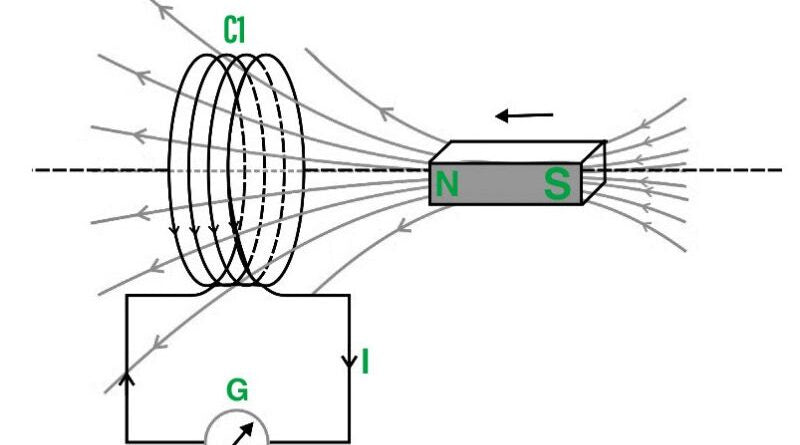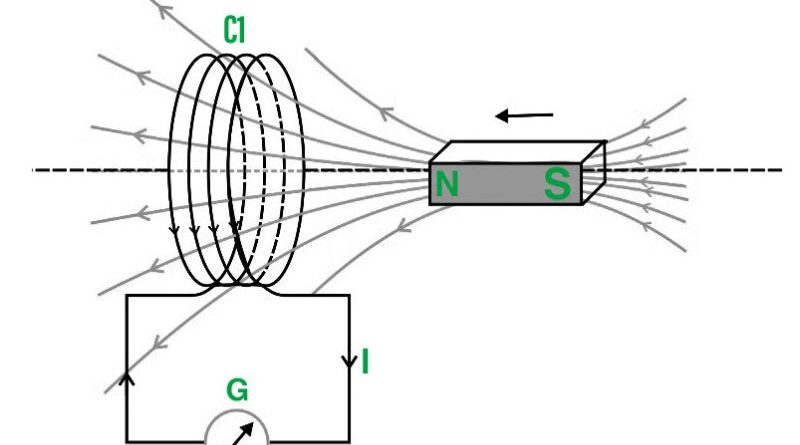
Lenz's law is an important concept in electromagnetic induction that describes the relationship between a changing magnetic field and the current induced in a closed circuit. This rule is based on the principles of German scientist Heinrich Lenz. Therefore, it was formulated in 1834 by the Russian physicist Heinrich Lenz.
Lenz's law states: “The direction of an induced electromotive force produced by electromagnetic induction is such that it produces a current that forever opposes the cause responsible for generating the electromotive force. In short, the electromotive force evoked forever opposes the cause that.” produces it, which is mathematically delimited by a negative sign in its expression.
Explanation of Lenz's law
The explanation is as follows:
Consider a coil as shown in Fig. Allow a magnet to approach the lock so that the attractive N pole faces a ring that can flow through the loop to it.
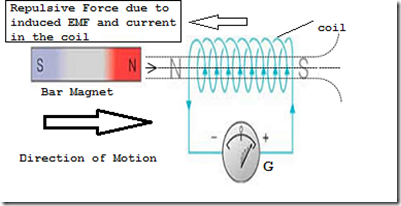
According to Lenz's law, the direction of the current is opposite to the cause due to the electromotive force caused. The cause is the movement of the magnet towards the coil. Thus, the electromotive force can form a loop so that these ring-shaped poles can become a north pole. Thus, two similar poles can meet and experience the repulsive force opposite to the movement of the bar magnet, as shown in Fig.
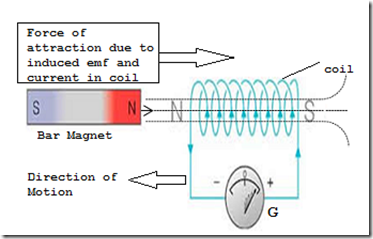
If a similar magnet is moved away from the coil, the electromotive force evoked can produce a current in that direction, which can cause the surface of the magnet facing the magnetic field to behave like a south pole. This causes two unequal poles to meet and creates an attractive force in the direction of the magnetic field, away from the coil. The galvanometer shows deflection in different directions as shown in the figure.
Lenz's law can be summarized as follows:
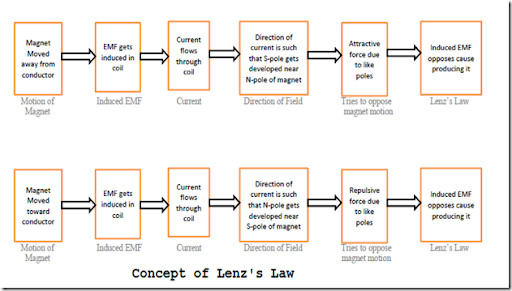
Important components of Lenz's law
Let's break down Lenz's Law into its main components to get a clearer understanding of its fundamentals.
Induced current
When a change in magnetic field passes through a closed loop of wire, an electric current is induced in that wire. This phenomenon is known as electromagnetic induction. The change in magnetic field can occur due to factors such as relative motion between the magnet and wire or a change in current in a nearby coil.
The direction of the induced current
Lenz's law states that the induced current flows in a direction opposite to the change in the magnetic field that produces it. In other words, the induced current creates a magnetic field that counteracts the change in the original magnetic field.
Energy saving
When a magnetic field changes, energy is required. By neutralizing the difference in magnetic field, the induced current acts as a resistance and requires energy to generate. This resistance ensures that the overall system performance is maintained.
Magnetic field interactions
Lenz's law can be understood using the concept of magnetic field interaction. As a magnet approaches a closed loop of wire, it induces a magnetic field in the wire in response to the changing magnetic field. The induced magnetic field then interacts with the original magnetic field and creates a force that opposes the magnet's movement. The situation is similar when the magnet is moved away from the wire. The induced current creates a magnetic field that attracts attraction and neutralizes the change.
Applications of Lenz's Law
Lenz's law has practical applications in several technological areas. Let's look at some of its most important uses:
Electric generators
Lenz's law plays a crucial role in electrical generators. It ensures that the current induced in the generator creates a magnetic field that resists the movement of the generator, making it difficult to rotate. This effect facilitates the conversion of mechanical energy into electrical energy.
Transformers
Transformers use Lenz's law to regulate voltage. By adjusting the number of turns in the primary and secondary coils, transformers can efficiently control voltage levels, facilitating power transmission over long distances.
More than generators and transformers: Lenz's law in action

Generators and transformers are well-known areas of application of Lenz's law, but its influence also extends to numerous other areas:
Magnetic brakes
Lenz's law is used in magnetic braking systems. Here the principles of the law are used to create eddy currents in a conductor when it is exposed to a changing magnetic field. These eddy currents create an opposing magnetic force that slows the object's movement. For precise control and safety, magnetic brakes are used in high-speed trains, roller coasters and industrial machines.
Metal detectors
The way metal detectors work is based on Lenz's law. When a metallic object passes through the coil of a metal detector, the magnetic field is interrupted. This disturbance induces eddy currents in the metal and creates a secondary magnetic field. The detector detects this field and alerts the operator to the presence of metal.
Eddy current test
In industry, eddy current testing, another application of Lenz's law, is used to test materials for cracks, defects, and structural integrity. A coil generates alternating currents, creating a changing magnetic field. When this field interacts with a conductive material, such as a piece of metal, it induces eddy currents in the material. Monitoring changes in these eddy currents helps identify defects in the material.
Production of energy
Lenz's law even reached energy production technologies. Systems such as regenerative braking in hybrid and electric vehicles convert kinetic energy into electrical energy according to the principles of Lenz's law. When a vehicle brakes, the movement creates a counterforce that is converted into electricity and stored for later use.
Conclusion
Lenz's law, originally formulated to describe the behavior of currents under electromagnetic induction, has extended its influence far beyond physics. Its principles are applied in many practical technologies and make our lives more efficient and safer. Furthermore, Lenz's Law has found a place in our cultural and philosophical discourse, symbolizing resistance, resilience, and the enduring human spirit.
In this comprehensive exploration, we explore the fundamental principles of Lenz's Law, experiment with its practical applications, and even ponder its symbolic and philosophical meaning. As we continue to innovate and expand the frontiers of human knowledge, Lenz's Law continues to be a constant beacon that guides us through the complex interplay of forces in our ever-evolving world.

